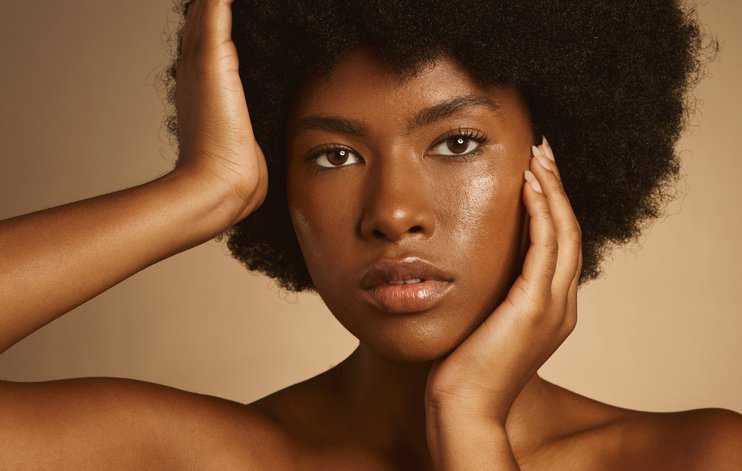Injectables Glossary
If you’ve been religious with your skincare and had your aesthetician on speed dial, but there are still improvements that you are looking for - it might be time to consider non-surgical options such as injectables. We know this sounds daunting, alongside contending with possible social stigma so together with our expert practitioners, we’ve put together top tips and the best advice to follow on your injectables journey.

What are Injectables?
Injectables are gel or fluid type substances which are injected into the skin via a needle. They are formulated to tackle aesthetic concerns that topical skincare can’t address effectively. Issues such as wrinkles, loss of volume or a more serious decline in skin tone and quality can all be addressed in this way. These problems often emerge in the deeper layers of the skin, where skincare can’t penetrate. Injectables can reach these lower layers easily and give you the results you’ve been looking for.
Dr Ifeoma Ejikeme, Consultant Skin Expert and founder of Adonia Medical Clinic notes that ‘Injectables, such as dermal fillers and botulinum toxin, can help smooth out wrinkles and fine lines, providing a more youthful appearance.’
They can also ‘restore lost volume in the face, achieve greater facial symmetry by balancing out uneven features or correcting asymmetry and can be used to address specific skin concerns common in individuals with Black skin, such as keloids or hypertrophic scars.’

Types of Injectables
Neurotoxins
Neurotoxins are one of the most commonly used injectables. Botulinum toxin (Botox) is the most common brand used, but Dysport, Xeomin, Jeuvaeu and Daxxify are also widely used.
A common misconception is that neurotoxins ‘freeze’ your skin, but they actually work by relaxing and paralysing the muscles under your skin to release the wrinkles that have developed. They are effective on expression lines caused by movement, but can also treat deeper set wrinkles caused loss of volume in the deeper layers of the skin. Used carefully, neurotoxins can be preventative,
Dr Stefanie Williams from Eudelo says ‘[Neurotoxins] work best before mimic lines become static and are visible, even when the face is relaxed.’ Dr Ejikeme agrees adding ‘When used appropriately, it can help delay the onset of certain signs of ageing.’
However, it’s essential to have a comprehensive discussion with a qualified practitioner to understand the potential benefits, risks, and long-term implications before considering preventative use.
Neurotoxins can also be used to treat chronic headaches, teeth grinding and excessive sweating (hyperhidrosis).
Longevity is different for everyone, but you can usually expect to have a top up once every 3-6 months. Many people find that the more consistently they have treatments, the less often they need top ups overall.
Dermal Fillers
Dermal fillers are injectables made from heavier hyaluronic acid gels. Thicker dermal fillers are used to change the shape of your nose, jawline or chin, whereas thinner dermal fillers are used to add volume in your cheeks, lips and under the eyes – all areas which can lose volume with age.
Dr Tijion Esho, cosmetic doctor and founder of the ESHO clinic, says that he regularly treats Black patients with dermal fillers for loss of volume around the eyes. He also uses dermal filler to treat naso-labial folds (the lines that extend diagonally from the side of your nostrils to your lips), a common concern for many of his Black patients.
The main brands are Juvederm, Restylane, Teoxane and Hydrafill and sometimes a combination of brands and fillers for different areas of the face in order to achieve the best results.
Depending on the type and thickness of dermal filler used, they can remain in your skin with visible results for up to 18 months. Recent studies have shown that filler can stay in your skin for up to 5 years. There is some evidence that areas where filler has been injected may remain tighter and stronger over time, but don’t take this to the bank just yet!
Finding a specialist practitioner is key, as if not handled with care, dermal fillers can leave an unnatural puffy appearance to the skin.
Skin Boosters
Skin Boosters often crossover with other injectable categories, in particular dermal fillers, however they are different because they also encourage the body’s own natural production of collagen and elastin using a range of nutrients, vitamins and amino acids. Dr Esho explains that skin boosters use non-bonded rather than bonded hyaluronic acid, that you would find in dermal fillers. This means that they don’t typically add volume. Dr Williams adds that skin boosters are often a good place to start with injectables and are usually appropriate for people in their 20s onwards.
Profhilo is a thin hyaluronic acid dermal filler, which hydrates the skin leaving your skin glowy and bright without adding dramatic volume. Think of it as an injectable serum – getting into those deeper layers. You will need two treatments around 4 weeks apart, and then a top up every 6-12 months for optimum results.
Sculptra is a dermal filler with Lactic acid to stimulate collagen and elastin production to provide volume. It’s used all over the body, especially used in non-surgical bum procedures. Sculptra can also treat wrinkles where you don’t want to lose movement as you would with neurotoxins. You will need between 1-3 treatments over the course of up to 6 months, followed by a treatment every 2 years to maintain results. Unlike traditional dermal filler, it doesn’t migrate.
LightEyes is a Vitamin C, hyaluronic acid and antioxidant cocktail to treat the eye area. It improves circulation around the eye to encourage drainage, reducing puffiness and brighten the skin. Unlike dermal filler which sometimes have the potential to leave a puffy look under the eyes, LightEyes treats the concern rather than masking it. For best results, you will need 2-4 treatments spaced 2 weeks apart with maintenance treatments every 3-4 months afterwards.

Managing Risks
& Complications
As with any advanced treatment there are risks that are associated with injectables. Your practitioner will go through your specific risks and make sure you understand any potential complications. Some general risks and complications are:
Bruising, swelling and hyperpigmentation– this is very common and should go down within a couple of weeks, but having a comprehensive skincare routine will help to prevent and address any hyperpigmentation.
Flu like symptoms – this can happen after neurotoxins and should pass within five days
Migration – Dermal filler can move from the area in which it was originally injected, leaving an uneven or lumpy appearance. This can be treated by dissolving the filler.
Embolism – this can occur when dermal filler is injected into a vein. When injectables are carried out by a medical professional, it is rare and usually treatable. In serious cases it can lead to tissue death or blindness.
Injectables are a great way to tackle a wide range of concerns that your skincare isn’t managing effectively. Although there is some stigma around Black women using injectables, they are completely safe, and it is important to find a practitioner you trust and who understands the emotional and societal background to these issues.

Top Tips & Key Questions
As with any non-surgical treatment, it is important you are comfortable and confident in your practitioner. So asking the right questions is crucial. Good practitioners will provide all the information you need during your consultation, but will also give you room to quiz them. Remember, there is no such thing as a silly question and if the practitioner makes you feel uneasy, then they are not the right match for you.
Make sure anyone who is doing injectables is a medical professional – a surgeon, doctor, dentist or nurse. They will have full understanding of anatomy and how to handle any complications.
Do they work with Black skin regularly, and are aware of typical concerns?
How do they manage the risk of hyperpigmentation or scarring? Some practitioners will use a cannula to inject filler, avoiding multiple injection sites, or will inject deeper to avoid the melanocytes. Your practitioner may also suggest treating your concerns over a few sessions to limit the risk of scarring, inflammation and hyperpigmentation.
Are they a specialist in your concern? This is especially important if they are injecting around your eyes.
Make sure you let your practitioner know if you are prone to keloid scarring.
What are their emergency protocols and who will you be able to contact after your treatment if you have any concerns?


